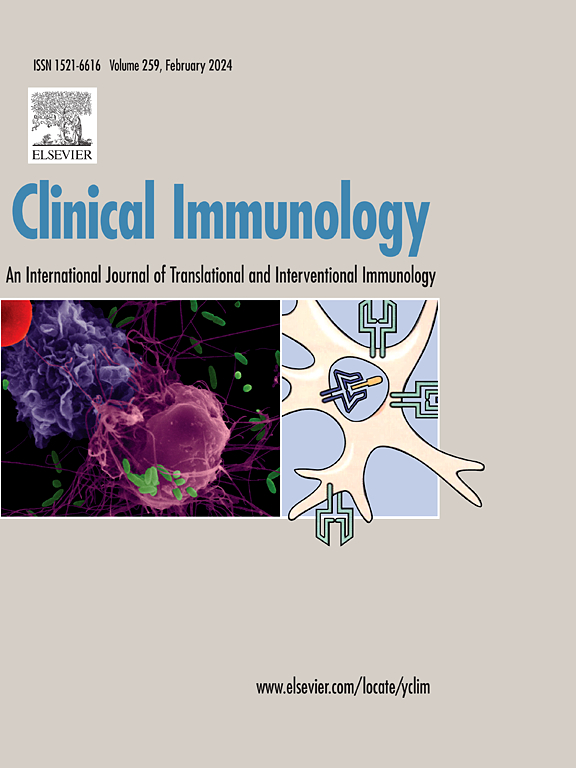LncRNA MEG3作为类风湿性关节炎的生物标志物和治疗靶点:来自基因多态性、表达模式和功能机制的见解
IF 3.8
3区 医学
Q2 IMMUNOLOGY
引用次数: 0
摘要
母系表达基因3 (MEG3)与自身免疫有关,但其在类风湿关节炎(RA)中的作用尚不清楚。本研究旨在探讨MEG3在RA发病中的基因多态性、表达模式、功能机制及其临床相关性。在551例RA患者和595例对照中对MEG3单核苷酸多态性(snp)进行了基因分型,未发现与RA易感性相关。在RA患者外周血单个核细胞(PBMCs)中,MEG3表达下调,特别是在acpa阳性病例中,但随着NSAID的使用而升高。在成纤维细胞样滑膜细胞(FLS)中,MEG3下调。MEG3过表达可抑制FLS增殖和侵袭,降低IL-1β和IL-6,但对TNF-α无抑制作用。而MEG3敲低可增强FLS的增殖和侵袭,升高TNF-α和IL-1β,但不改变IL-6。总的来说,MEG3多态性与RA易感性无关。MEG3异常与RA临床指标相关,并调节FLS致病性,提示其可能成为RA的临床生物标志物和治疗靶点。本文章由计算机程序翻译,如有差异,请以英文原文为准。
LncRNA MEG3 as a biomarker and therapeutic target in rheumatoid arthritis: Insights from gene polymorphisms, expression patterns, and functional mechanisms
Maternally expressed gene 3 (MEG3) is implicated in autoimmunity, but its role in rheumatoid arthritis (RA) is unclear. This study aimed to investigate gene polymorphisms, expression patterns, and functional mechanisms of MEG3 in RA pathogenesis and its clinical associations. MEG3 single nucleotide polymorphisms (SNPs) were genotyped in 551 RA patients and 595 controls, finding no association with RA susceptibility. MEG3 expression was downregulated in peripheral blood mononuclear cells (PBMCs) from RA patients, particularly in ACPA-positive cases, but increased with NSAID use. In fibroblast-like synoviocytes (FLS), MEG3 was downregulated. Overexpression of MEG3 inhibited FLS proliferation and invasion, lowering IL-1β and IL-6 but not TNF-α. Whereas MEG3 knockdown enhanced FLS proliferation and invasion, elevating TNF-α and IL-1β without altering IL-6. Collectively, MEG3 polymorphisms are not associated with RA susceptibility. MEG3 dysregulation correlates with RA clinical indicators and regulates FLS pathogenicity, indicating its potential as a clinical biomarker and therapeutic target in RA.
求助全文
通过发布文献求助,成功后即可免费获取论文全文。
去求助
来源期刊

Clinical immunology
医学-免疫学
CiteScore
12.30
自引率
1.20%
发文量
212
审稿时长
34 days
期刊介绍:
Clinical Immunology publishes original research delving into the molecular and cellular foundations of immunological diseases. Additionally, the journal includes reviews covering timely subjects in basic immunology, along with case reports and letters to the editor.
 求助内容:
求助内容: 应助结果提醒方式:
应助结果提醒方式:


